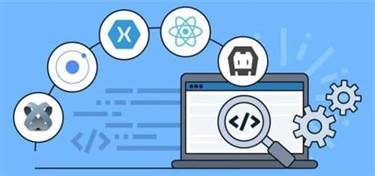Originally, Kotlin’s creator, Dmitry Jemerov, required features Java didn’t have. He found those features in Scala and Groovy, which are other programming languages that could run on the JVM (C# and JavaScript also influenced Jemerov). In Scala, basic types like numbers and booleans are not represented as primitive types; instead they are objects. Meanwhile, Groovy provides a concise and efficient way of handling variable nullability.
In addition, there are specific frameworks written in Kotlin such as Ktor. For more information, check out the resource on server-side development. An Android developer might choose Java over Kotlin if they are new to Android software development. Historically, most examples of Android documentation are in Java.
Kotlin is a statically typed, general-purpose programming language with type inference. It is designed to interoperate fully with Java, and the JVM bytecode generated by Kotlin is 100% compatible with Java bytecode. Kotlin is a fully-featured language that supports object-oriented programming, functional programming, and metaprogramming. It is focused on interoperability, safety, clarity, and tooling support.
One clear deficit of Scala is that its compile times tend to be long, something that is most obvious when you’re building a large body of Scala, such as the Spark repository, from source. Kotlin, on the other hand, was designed to compile quickly in the most frequent software development scenarios, and in fact often compiles faster than Java code. To get into the chatbot development, you’ll need to have a good command of these programming languages. Kotlin/JS allows developers to access powerful browser and web APIs in a type-safe fashion. They can write front-end code in the same language that they used for back-end code, and it’ll be compiled to JavaScript to run in the browser. The modern features of the language make it possible for Web Developers to build applications that can scale quickly on commodity hardware.
What Are the Advantages of Kotlin?
Kotlin is a modern, trending programming language that was released in by JetBrains. All the subclasses of the sealed class are defined at compile time. No new subclasses can be added to it after the compilation of the module having the sealed class.
- For more information, check out the resource on server-side development.
- This means you can use Kotlin for Android development, back-end development or data science.
- In this article, I will tell you what is Kotlin and its fundamentals.
- Kotlin is a modern, trending programming language that was released in by JetBrains.
Kotlin is sponsored by JetBrains and Google, through the Kotlin Foundation. Other programming languages can be dynamically typed, where the compiler assigns a type to all the variables at runtime. A good example of a dynamically typed programming language is Python. In Python, programmers can write code faster because they don’t need to specify variable types every time the code runs, which translates into less verbose code. JavaScript is also a dynamically typed language so when we declare a variable we don’t need to specify its type. Kotlin and Java are both general-purpose, statically typed programming languages.
Top 6 Programming Languages for Chatbot Development
Here you’ll learn how to develop and improve your cross-platform mobile application using Kotlin Multiplatform. Kotlin is inspired by existing languages such as Java, C#, JavaScript, Scala and Groovy. We’ve tried to ensure that Kotlin is easy to learn, so that people can easily jump on board, reading and writing Kotlin in a matter of days. Learning idiomatic Kotlin and using some more of its advanced features can take a little longer, but overall it is not a complicated language. In addition, a command line compiler is available, which provides straightforward support for compiling and running applications. Kotlin is 100% compatible with the JVM and as such you can use any existing frameworks such as Spring Boot, vert.x or JSF.
As a statically typed language, Kotlin was initially designed to run on the JVM. However, it is also possible to compile Kotlin code to JavaScript. What’s more, Kotlin native allows programmers to compile Kotlin code to native binaries, which are executables created to run natively in a specific operating system and that can run without the JVM. Kotlin’s native binaries can run on macOS, iOS, tvOS, watchOS, Linux, Windows and Android NDK.
Kotlin is simpler, making it easier for beginners to learn. Kotlin focuses on stripped-down, functional code and avoids repetitive boilerplate code. Semicolons at the end of every line are https://www.globalcloudteam.com/ not needed, although Kotlin does not have an issue if a developer uses them. Additional features reduce the complexity and length of code needed to achieve the end goal of a Kotlin team.
Kotlin Multi-platform Mobile is intended to be a software development kit for creating cross-platform mobile applications. This means that from one Kotlin code base, you’ll be able to compile apps that run on not just Android phones but also iPhones and the Apple Watch. This project is currently in the alpha stage but has a lot of promise. Kotlin is a programming language that was released in 2011 by JetBrains, a company that sells integrated development environments (IDEs) for programming languages. Since then, it’s become a favorite language for developers and replaced Java in many software projects. At this point you may be wondering how Kotlin handles the results of Java interoperability calls, given the differences in null handling and checked exceptions.
In other words, Kotlin has all of the features and advantages of a functional language. For example, consider the following functional Kotlin idioms. It is not completely obvious from this example, but Kotlin has relaxed Java’s requirement that functions be class members. In Kotlin, functions may be declared at top level in a file, locally inside other functions, as a member function inside a class or object, and as an extension function. Extension functions provide the C#-like ability to extend a class with new functionality without having to inherit from the class or use any type of design pattern such as Decorator. Kotlin is a modern programming language that can run side by side with Java while being easier to write.
Kotlin was designed to be a better language than Java and interoperable with Java. Its simplicity and interoperability were the incentives to learn Kotlin. The intention was that Java developers and their organizations could gradually transition to the new language without having to worry about incompatibility. There is less repetition in instantiating variables in Kotlin than there is in Java. In the example above, the phrase String does not need to be repeated in the Kotlin code. The new operator also isn’t used because Kotlin automatically infers the data type.
Kotlin combines object-oriented and functional programming features with a more concise syntax than Java, as well as safety features for null values. Kotlin has both object-oriented and functional constructs. You can use it in both OO and FP styles, or mix elements of the two. With first-class support for features such as higher-order functions, function types and lambdas, Kotlin is a great choice if you’re doing or exploring functional programming.
For example, a sealed class in a compiled jar file cannot be subclassed. Destructuring declarations decompose an object into multiple variables at once, e.g. a 2D coordinate object might be destructured into two integers, x and y. As shown in the above figure, you can either use Eclipse or IntelliJ or Android Studio to develop applications. But, I am using IntelliJ IDEA because it is the platform which is mainly designed and developed for Kotlin and a feasible IDE. Kotlin is sponsored by Google, announced as one of the official languages for Android Development in 2017.
In many ways both Scala and Kotlin represent the fusion of object-oriented programming, as exemplified by Java, with functional programming. For almost anyone doing Android development, the advantages of Kotlin are compelling. The typical rough estimate indicates approximately a 40% cut in the number of lines of code from Java to Kotlin. Kotlin is a statically typed, general-purpose programming language developed by JetBrains, that has built world-class IDEs like IntelliJ IDEA, PhpStorm, Appcode, etc. It was first introduced by JetBrains in 2011 and a new language for the JVM. Kotlin is object-oriented language, and a “better language” than Java, but still be fully interoperable with Java code.






